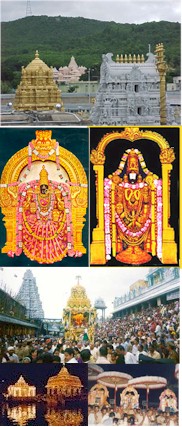Welcome to Adiyen Sri Ramanuja Dasan !
" Srimathe Ramanujaya Namaha !"
24) What are Samhita and Aranyaka. ?
Modern thinkers divide Vedas into four portions, as follows: Samhita Brahmana Aranyaka, and Upanishads. Samhita denotes collection of Mantras. Brahmanas have already been described earllier. Aranyakas are texts, which were recited in hermitages in forests. Upanishads contain philosophical thoughts, in the form of discussions and explanations.
25) Why are Upanishads called Jnana Kanda or Brahma Kanda?
They talk about realisation of God, how to attain salvation. Since they speak about realising Brahman or the ultimate reality the Upanishads are called Brahma Kanda. Since they give us Knowledge about attaining salvation, they are also called Jnana Kanda. The Upanishads are also called Veda Siras, i.e., the head of the Veda. When we say the head, we mean the most important part of the Veda.
26) What is the difference between Brahma and Brahman? Are both the same?
No. Brahma is the four-faced one, who came from the lotus, out of the navel of Lord Narayana. Brahman means one who is great and hence denotes the Supreme Being or the Ultimate Reality.
27) Talking about Upanishads, how many Upanishads are there?
People say that there are more than a hundred Upanishads, but only some of the Upanishads are accepted authoritatively by all sections of the Hindus. The important ones are called Dasopanishad, i.e., the ten Upanishads. These ten Upanishads are accepted as authority and quoted by ancient philosophers like Sankara, Ramanuja, and Madhva.
28) What are the ten Upanishads?
The ten Upanishads are: Isavaya Upanishad, Kena Upanishad, Kata Upanishad, Prasna Upanishad, Mundaka Upanishad, Mandukya Upanishad, Taittiriya Upanishad, Aitareya Upanishad, Chandogya Upanishad, Brihadaranyaka Upanishad.
29) Are there any other important and accepted Upanishads?
We have Svetasvatara Upanishad, Kaushitaki Upanishad, Subala Upanishad, and Maha Narayana Upanishad forms part of Taittiriya Upanishad, Aitareya Upanishad, Chandogya Upanishad, Brihadaranyaka Upanishad.
30) From which of the Vedas do these Upanishads come?
Aitareya Upanishad is in Rig Veda Isavasya Upanishads, Kata Upanishads, Taittiriya Upanishad Bridhadaranyaka Upanishad are in Yajur Veda. Kena Upanishad and Chandogya Upanishad are from Sama Veda. Prasna Upanishad, Mundaka Upanishad and Mandukya Upanishad are all in Atharva Veda.
Jai Srimannaryana !
Thanks for your valuable time. Visit our web site again for more information and latest updates.

